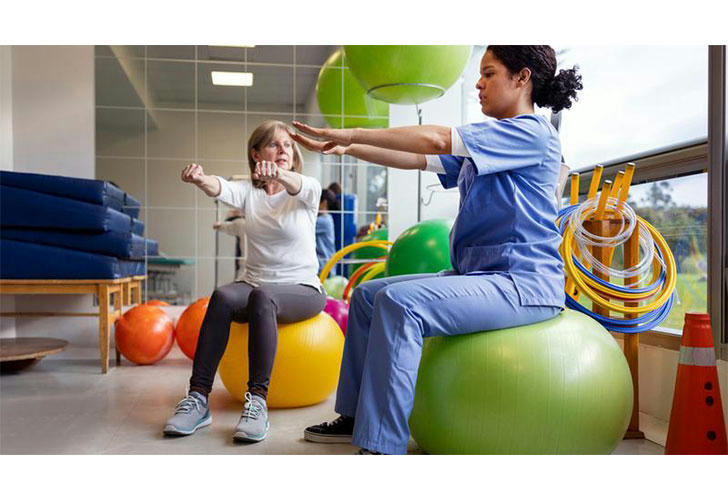Rehabilitation Training for Patients with Brain Injury
Brain injuries can result from various causes, including trauma, strokes, or medical conditions. These injuries can lead to significant challenges, affecting physical abilities, cognitive functions, and emotional well-being. Rehabilitation training is crucial for helping patients recover and regain their independence.

Common Issues After Brain Injury
1. Physical Impairments: Patients may experience weakness or paralysis in limbs, balance issues, and coordination difficulties. These impairments can hinder daily activities and mobility.
2. Cognitive Challenges: Memory problems, difficulty concentrating, and impaired problem-solving skills are common after a brain injury. Patients may struggle with tasks that require mental effort.
3. Speech and Language Difficulties: Many individuals experience challenges with speaking clearly or understanding language. This can affect communication and social interactions.
4. Emotional Changes: Anxiety, depression, and mood swings can occur after a brain injury. Emotional support is vital for overall recovery.
5. Behavioral Changes: Some patients may exhibit impulsive behavior or difficulty controlling emotions, impacting their relationships and daily life.
Targeted Rehabilitation Exercises
Rehabilitation for brain injury patients often involves tailored exercises that address specific challenges. Here are some effective training methods:
1. Physical Rehabilitation
Strength Training: Exercises like leg raises and arm curls can help rebuild strength in affected limbs. Resistance bands or light weights can be used to gradually increase intensity.
Balance Training: Activities such as standing on one leg or using balance boards improve stability and coordination. Tai Chi is also beneficial for enhancing balance.
Gait Training: Walking exercises, possibly using a treadmill or walking aid, help improve mobility. Occupational therapists often incorporate functional tasks to simulate real-life scenarios.
2. Cognitive Rehabilitation
Memory Exercises: Techniques like using memory games or mnemonic devices can enhance recall abilities. Digital apps designed for cognitive training can also be useful.
Attention Training: Tasks that require focus, such as puzzles or concentration games, help improve attention spans. Engaging in activities that require multitasking can also be beneficial.
3. Speech Therapy
Articulation Exercises: Practicing sounds and words with a speech therapist can improve speech clarity. Techniques may include repeating phrases or using visual aids.
Language Games: Engaging in word games or storytelling exercises can aid in language comprehension and expression.
4. Occupational Therapy
Daily Living Skills: Practicing tasks like cooking or dressing helps patients regain independence. Therapists may use adaptive tools to facilitate these activities.
Fine Motor Skills: Activities such as buttoning shirts or using utensils improve hand coordination and dexterity.
5. Emotional Support and Counseling
Providing psychological support through counseling can help patients cope with emotional changes post-injury. Group therapy sessions may also foster social connections and support networks.
Real-Life Case Examples
1. Case Study of a 28-Year-Old Male
A 28-year-old male suffered a traumatic brain injury from a motorcycle accident. He experienced significant weakness on his left side and difficulty with speech. His rehabilitation program included physical therapy focused on strength training for his left arm and leg through targeted exercises like resistance training and gait training on a treadmill with support from therapists. He also attended speech therapy sessions focusing on articulation and language comprehension exercises using visual aids. After six months of consistent rehabilitation, he regained much of his strength and improved his ability to communicate effectively.
2. Case Study of a 50-Year-Old Female
A 50-year-old female experienced a stroke that affected her right side and caused memory issues. Her rehabilitation included occupational therapy to help her relearn daily living skills like cooking and personal care through adaptive techniques tailored to her needs. She practiced memory exercises using flashcards while participating in group therapy sessions that focused on cognitive skills through games and discussions with other stroke survivors. Over eight months of therapy, she reported significant improvements in her memory and regained the ability to perform daily tasks independently.
Recommended Products for Rehabilitation
1. Resistance Bands
Useful for strength training exercises to rebuild muscle strength.
2. Balance Boards
Help improve stability and coordination during rehabilitation.
3. Cognitive Training Apps
Apps designed to enhance memory and cognitive skills.
4. Speech Therapy Tools
Tools that assist with speech practice.
5. Occupational Therapy Tools
Adaptive utensils for practicing daily living skills.
6. Memory Games
Engaging games designed to improve memory function.
Conclusion
Rehabilitation after a brain injury is crucial for recovery and improving quality of life. By addressing physical impairments through targeted exercises, cognitive challenges with specialized training, speech difficulties through therapy, and utilizing recommended products, patients can make significant strides in their recovery journey.
Always consult with healthcare professionals before starting any new rehabilitation program or using specific products to ensure they are appropriate for individual needs. With the right support and resources, individuals recovering from brain injuries can regain their independence and improve their overall well-being through effective rehabilitation training strategies tailored to their specific challenges and goals.
